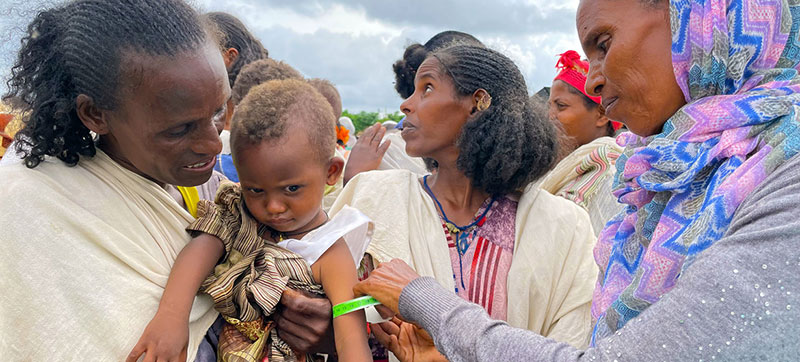 Ethiopia
Ethiopia Ethiopia: $40 million in aid relief for victims ‘living on a knife-edge'
New York: As the humanitarian crisis grows in Ethiopia’s conflict-affected north, the UN announced on Monday that $40 million in funds have been made available to scale up emergency operations.
The UN’s top emergency relief official, Martin Griffiths, said that millions of people in northern Ethiopia are now “living on a knife-edge, as the humanitarian crisis is growing deeper and wider”.
After returning from visiting Ethiopia, the Under-Secretary-General for Humanitarian Affairs and Emergency Relief Coordinator said that needs are rising across the country, and that the funds would help aid organizations reach some of the most vulnerable.
Spiralling needs
The situation has spiralled since November 2020, when central government troops clashed with forces loyal to the Tigray People’s Liberation Front (TPLF).
And neighbouring regions Amhara and Afar have also been swept up in the deadly violence and terrible rights abuses
The UN Central Emergency Response Fund (CERF) allocation will also support relief agencies providing protection and other life-saving assistance to people affected there as well.
“Women, boys and girls continue to bear the brunt of the conflict, yet their protection needs remain underfunded”, Mr. Griffiths warned, his comments coming after the UN humanitarian aid office, OCHA, said that 364 aid trucks have been waiting for authorization to access Tigray since 18 October.
According to OCHA’s latest update, the situation in northern Ethiopia remains highly unpredictable with civilians severely impacted and a broad state of emergency declared nationwide.
“It is estimated that 80 per cent of essential medication is no longer available in Tigray while most health facilities are not functional due to damage and lack of supplies,” OCHA explained.
Only 19 of the 59 mobile health and nutrition teams operating at the end of August are still providing services, owing to a lack of supplies and fuel, the UN humanitarian Office said.
Hospitals lacking
At a hospital in the Tigrayan capital Mekelle, 47 people have reportedly died of kidney failure because the medical facility lacked dialysis equipment.
OCHA added that 32 patients with chronic kidney disease receive treatment twice a week, “instead of the standard three times, due to limited supplies and medicine”, while cancer patients are now using the last remaining stock of expired chemotherapy drugs.
“New cancer diagnosed patients are not receiving any drugs”, OCHA said, leaving an estimated 500 cancer patients without treatment.
Displacement emergency
In neighbouring Amhara to the south, fighting has caused large-scale displacements from North Gonder, Wag Hemra, North and South Wello zones as well as in and around Dessie, Kombolcha, Baati and Kamissie.
This has increased humanitarian needs, OCHA noted, including for shelter, food, water, medicines and health services, dignity and hygiene kits for women and protection services.
To the east of Tigray in Afar, thousands of people have also been reportedly displaced from Chifra Woreda, Awsi Zone and in Ada`ar Woreda.
Drought response
In addition to providing help to Ethiopia’s conflict-affected northern regions, communities will also receive support for an early response to drought in the south of the country, Oromia regions and in Somali.
Relief agencies will provide drinking water, including to prevent waterborne diseases and mitigate the risk of cholera outbreaks and help pastoral communities preserve their livestock.
Despite $25 million from CERF and $15 million from the country-based Ethiopia Humanitarian Fund (EHF), brining a $40 total injection of new resources to Ethiopia, the country still faces a funding gap of $1.3 billion, including $350 million for the response in Tigray.
Support Our Journalism
We cannot do without you.. your contribution supports unbiased journalism
IBNS is not driven by any ism- not wokeism, not racism, not skewed secularism, not hyper right-wing or left liberal ideals, nor by any hardline religious beliefs or hyper nationalism. We want to serve you good old objective news, as they are. We do not judge or preach. We let people decide for themselves. We only try to present factual and well-sourced news.







